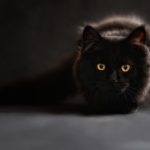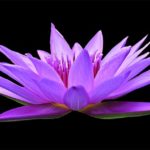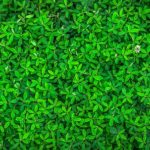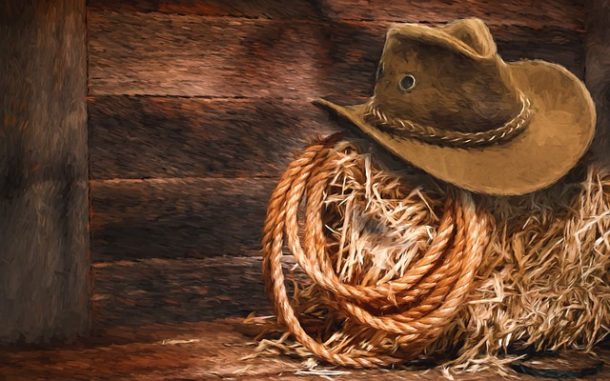
By Janine Mick Wills

Is it the right color to use?
Don’t go with the first color that pops into your mind. You might end up with five characters with five types of blue eyes or three people with hair in five shades of brown. As with your characters’ names (See What Is in a (Character’s) Name?), variety is your spice.
This also holds true when determining the color of their clothing. For a pleasing visual, choose colors that go well with your characters’ coloring (Check out the old standby Color Me Beautiful), or if your intent is to jar the readers, choose colors outside of your characters’ color palette. Don’t go with the normative white for the “good guy” and black for the “bad guy.” Be more inventive (See “Use color to define a non-physical characteristic of your characters” below).
Is it necessary?
Does it add anything to your story? Does your reader need to know every nuance of your character’s physicality? Maybe her eyes are the window to her soul. Then by all means give them a color and do it when you first mention her. Don’t wait until halfway through the book. By then your reader will have made up a color and will stop to reevaluate everything about that character.

Use color to define a non-physical characteristic of your characters.
How about cinnamon for the eyes of a sweet, Victorian miss or gray-steel for the eyes of an imperial warlord? Or a southern lady dressed in lovely shades of pale pink or cream compared to the Union general storming her plantation in a cobalt blue uniform emblazoned with gold epaulets? Pale or pastel colors denote softness or weakness. Dark or vibrant colors show strength or superiority.
Along the same line, women usually wear clothing in every color of the rainbow, while men’s attire (especially dress clothes) rests more in neutral colors. And bright, flamboyant colors usually denote a person who is the same, or at the least, playful in nature as opposed to a somber individual, who might wear clothes to help him blend into anonymity. Using color this way works well unless you are purposely trying to mislead your reader (i.e. meek mannered Clark Kent) or aiming for a paradox, an anomaly, or a comedic overtone.
Don’t use a mundane color unless it suits your characters or storyline.
“His eyes were blue” is ambiguous and lends nothing to your story. The majority of people have either blue or brown eyes, so why state the obvious? The same holds true for skin color unless there is a reason to describe it. If your Indian princess’s great-grandmother was Sequoyah, it would be redundant (and unimaginative) to describe her skin as red. Plus, in today’s society, it’s best to not offend your reader by making ethnic generalities.
A unique color or way of stating a color (i.e. periwinkle eyes and hair the color of coffee first thing in the morning) can give a clear mental picture your reader will keep until the end of the book. The use of mundane colors can be used if you are diverting the readers from noticing the clothes (Trojan Horse-effect) or if the clothes are in general nondescript and don’t matter to your storyline (ex. The cowboy wore blue jeans and a faded work shirt).

Don’t use a color that is unfamiliar to your readers.
Do you know what the colors obsidian or carpi looks like? Your readers probably won’t know either. You’ve not only wasted precious words, but you’ve also not enlightened your readers in any way.
Use comparisons rather than a color word.
Ah, yes. Metaphors – A word used to represent something else and Similes – Comparing two things that are not alike, usually using the words “like” or “as.”
Here are examples of both to describe physical traits of a character rather than use actual colors.
Metaphor
Through veiled lashes, Cassandra peeked up at the cowboy. His tan complexion matched Phillip’s, though Phillip would never appear in public without shaving. And those eyes–a Texas sky right before twilight. (From my book Cassandra and the Cowboy)
Simile
“I have a younger sister too,” Maddie said. “Her name is Tamara. She is the image of our mother, pretty as a sunrise with hair the color of pulled taffy and eyes the color of sapphires.” (From my book Juanita and the Outlaw)
Use colors sparingly.

Every word you write is essential, including the colors you use to describe your characters and the clothing they wear. Choose wisely. Your readers are counting on you!
The following is a color list I saved many years ago that can help broaden your color palette. Use it in conjunction with the above hints to help color your character(s).**

Black
Onyx, Ebony, Lampblack, Midnight, Blue-black, Carbon, Coal, Raven, Jet, Shadow, Ink, Black Pear, Anthracite, Sable, Obsidian, Pitch, Pepper, Soot, Opaque, Licorice.

Purple:
Amethyst, Lilac, Magenta, Violet, Blackberry, Mauve, Indigo, Orchid, Heliotrope, Dewberry, Plum, Grape, Lavender, Egg Plant, Heather

Green:
Jade, Grass, Forest Bluish-green, Emerald, Aqua, Moss, Seafoam, Pine, Mallard, Sea, Malachite, Mist, Verdant, Pea, Hunter, Leaf, Pistachio, Kiwi, Spearmint, Aquamarine, Lime, Olive, Caledonia, Chartreuse, Kelly, Sage, Apple, Spruce, Mint, Celery, Periodot, Dill Parsley, Holly, Fern, Baltic, Frog Kelp, Avocado, Lettuce, Eucalyptus, Fatigue, Bayberry, Loden, Gooseberry, Bottle, Fir, Basil, Willow

Blue:
Azure, Electric, Wedgewood, Neon, Turquoise, Periwinkle, Cornflower, Powder, Sky, Peacock, Slate, Zinc, Rosemary, French, Air Force, Ultra Marine, Indigo, Sapphire, Steel, Ice, Lapis Lazuli, Marine, Delft, Arctic, Mallard, Bluebird, Carpi, Union, Wisteria, China, Teal, Royal, Cobalt, Robin’s Egg, Baby, Navy, Glacier, Federal, Moroccan, Denim, Ensign, Blueberry, Chambray, Bluebell, Mediterranean

White/Off-White:
Milk, Quartz, Cream, Ecru, Magnolia, Opal, Linen, Winter, Angora, Frosty, Almond, Cauliflower, Birch, Swan, Cotton Seed, Pearly, Eggshell, Ivory, Alabaster, Oyster, Parchment, Stone, Moonstone, Champaign, Cameo, Sugar, String, Diamond, Snowdrops, Natural, Rice, Vanilla, Jade, Oatmeal, Lily, Salt, Chalk, Snow, Bone, Antique, Muslin, Cement, Gardenia, Taffy, Plaster

Gray/Silver:
Smoke, Silvery, Tattletale, Charcoal, Pewter, Sooty, Salt and Pepper, Dun, Pearl, Slate, Cloud, Cannon, Armor, Chinchilla, Aluminum, Mortar, Tin, Gunmetal, Hoary, Steel, Funeral, Battleship, Diesel, Nickel, Lead, Quicksilver, Ashen, Dove, Concrete, Iron, Graphite, Artichoke, Platinum, Tinsel, Mercury, Primer

Yellow/Gold:
Fool’s Gold, Burnished, Flaxen, Butter, Blond, Brass, Sandy, Mustard, Topaz, Buttercup, Forsythia, Honeydew, Coreopsis, Cat’s Eye, Cheese, Tawny, Palomino, Jonquil, Platinum, Honey, White-gold, Wheat, Chamois, Pear, Butterscotch, Corn, Citrine, Maize, Goldenrod, Buff, Ash Blond, Straw, Cadmium, Daffodil, Primrose, Curry, Banana, Pineapple, Sunflower, Canary, Cornsilk, Marigold, Beeswax
Red/Pink:

Ruby, Dusky Rose, Claret, Maroon, Ox-blood, Brick, Tyrian Cochineal, Blood, Lobster, Scarlet, Salmon, Candy Apple, Garnet, Crimson, Shrimp, Apple, Brass, Rubicund, Auburn, Cherry, Ashes of Roses, Vermilion, Strawberry, Currant, Coral, Rose, Wine, Burgundy, Tomato, Beet, Fire Engine, Red Amber, Rubellite, Youngberry, Mango, Magenta, Tabasco, Hot Pink, Fuchsia, Watermelon, Holy Berry, Barberry, Boysenberry, Geranium, Cardinal, Vermeil, Loganberry, Cayenne Pepper, Corn Poppy, Coralberry, Wineberry, Pepto-Bismol Pink, Bismuth, Cerise Carmine, Cinnabar, Bordeaux, Cranberry, Brandy, Canyon, Elderberry Shell Pink, Heather, Poinsettia, Coralbells, Tearose, Paprika

Brown:
Earth, Cocoa, Copper, Cinnamon, Tortoise Shell, Mahogany, Taupe, Tan, Henna, Fawn, Ginger, Rust, Khaki, Mushroom, Saddle, Brunette, Buckskin, Foxy, Chocolate, Bay, Sand, Toffee, Roan, Butternut, Coffee, Tawney, Rosewood, Café au lait, Hazel, Ecru, Umber, Bronze, Nutmeg, Raisin, Maple, Tanned, Mocha, Walnut, Chili, Espresso, Cashmere, Clay, Potato, Tobacco, Bark, Amaretto, Suntan, Cordovan, Twine, Bamboo, Hazelnut, Driftwood, Peanut, Chestnut, Pecan, Camel, Spice, Mohair, Wicker, Timber, Pebble, Foxtail, Putty, Jute, Oak, Cashew, Butterrum, Mousy, Hickory, Drab, Acorn, Caramel, Cedar, Champagne, Suede, Butterscotch, Tea, Sandstone, Fudge, Redwood, Cognac, Burlap, Cappuccino, Desert, Latten, Soy

Orange:
Pumpkin, Burnt Orange, Terra-cotta, Raspberry, Russet, Melon, Berry, Carrot, Tangerine, Nasturtium, Peach, Trumpet Vine, Canyon, Coral, Apricot, Rust, Bittersweet, Cantaloupe, Titan, Persimmon, Marigold
* Read the first chapter of Cassandra and the Cowboy.
** I would like to give credit to whoever compiled this list, but the closest I can come is to a non-working link (cherylsterlingbooks.com). If anyone can help give due credit, please message me.

Joyce L Smith
13 Nov 2018I love this blog post. it is very informative. I want to share it so I can refer back to it!
admin
15 Nov 2018Thank you, Joyce, for taking the time to visit Janinemickwills.com. I’m glad the post was helpful. Choosing the right colors in every area of your writing is important. Let me know how you implement them in yours!